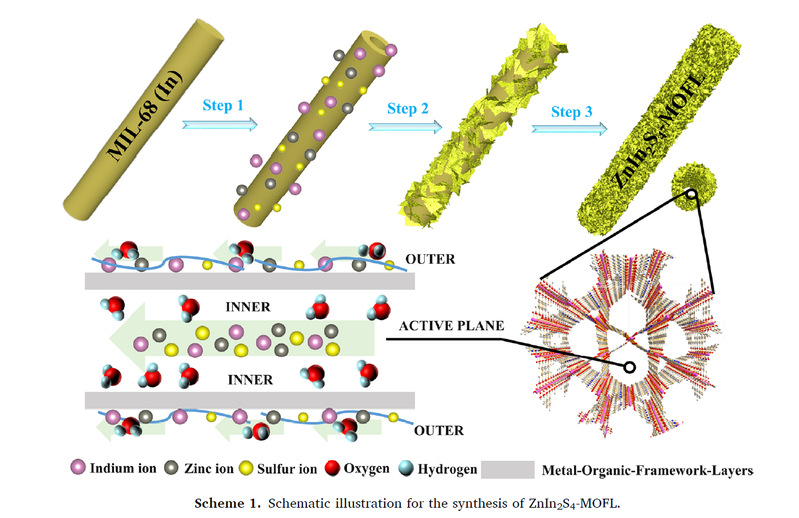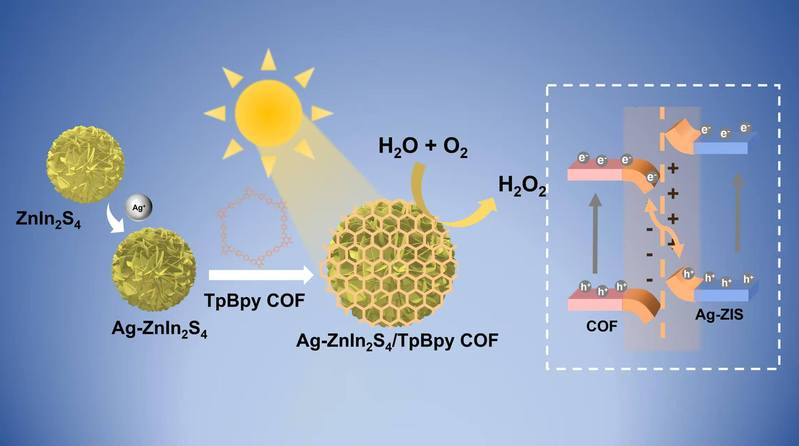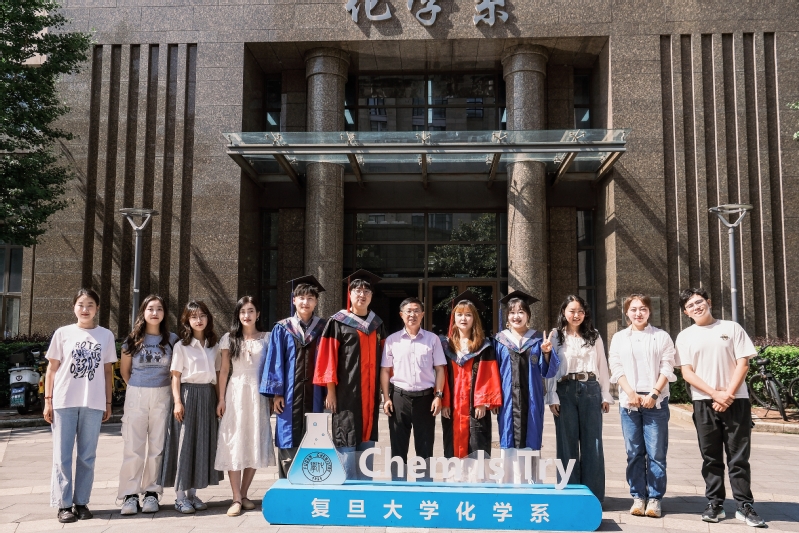This work reported a facile one-step method for constructing hollow tubular ZnIn2S4 modified by metal-organicframework-layers (MOFL) with In-MOF as precursor to be efficient photocatalysts (ZnIn2S4-MOFL) for robust
photocatalytic hydrogen evolution (PHE). The dominant catalyst of ZnIn2S4 and cocatalytic role of MOFL synergistically promoted the separation of electron and hole pairs due to the direct Z-scheme photocatalytic system, leading to an extraordinarily high PHE activity. The density functional theory (DFT) results revealed the remarkably decreased density of states (DOS) of ZnIn2S4 after coupling with the organic ligands of MOFL, indeed proving an effectively suppressed recombination of charge carriers and benefited the performance of photocatalytic reactions. Experimental PHE results showed that a large number of hydrogen bubbles were visible to naked eyes and the optimal hydrogen evolution reached 28.2 mmol/g/h, the highest value reported so far among
ZnIn2S4-based photocatalysts, and almost 14.8 times higher than that of pristine ZnIn2S4. More importantly, the
superior apparent quantum efficiencies (AQEs) of 22.67 % at monochromatic light (350 nm) and the stable hydrogen generation capability (5.7 mmol/g/h) under real sunlight irradiation all confirmed a promising
catalyst of ZnIn2S4-MOFL for hydrogen evolution applications.

https://www.sciencedirect.com/science/article/pii/S0926337321007578?dgcid=coauthor![]() 10.1016_j.apcatb.2021.120632.pdf
10.1016_j.apcatb.2021.120632.pdf
 Wei-Lin Dai Group
Wei-Lin Dai Group



